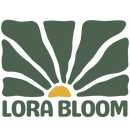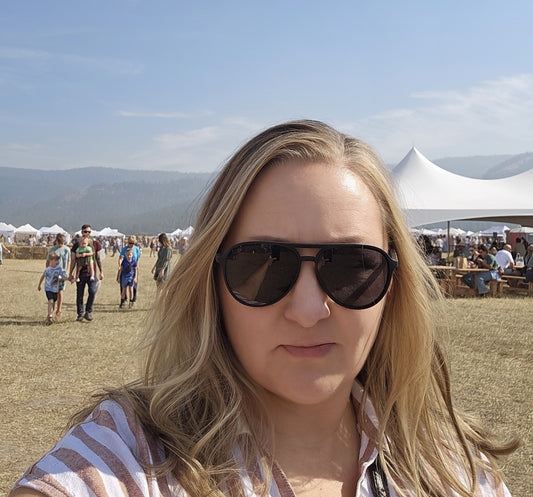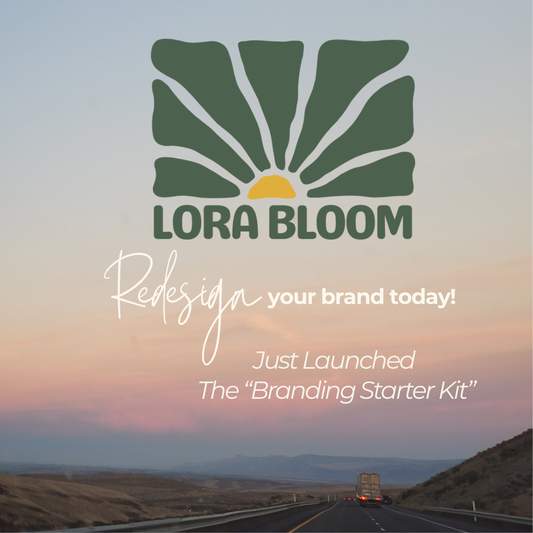There is so much going on in the world right now. I too am on edge. I don't understand the world we live in.
As a business owner, I'm just trying to stay afloat myself. As a former floral business owner for 10 years, I've made a full transition to consulting. I'm loving it, but it's like starting a new business in many ways. I have literally depleted my bank account to mere pennies. But, I've been here before. I know what it's like to struggle with working capital or lack thereof. So, I'm trying to keep an air of calm. I'm trying to NOT PANIC!
A 25% increase on tariffs of all goods coming from Colombia, the largest importer of flowers in the U.S. could be a big problem. While I'm not here to discuss the complexities of politics, I have been standing my ground on buying American grown flowers for over a decade. Nearly 80% of flowers sold in the United States are imported from foreign countries. Only 20% of flowers are sourced from U.S. soil; the majority come from California, Washington, and Oregon. Imported flowers have a compelling and competitive market price, but you can't beat a fresh picked flower from a local field just a few hours before using it in a designed arrangement later that day. There's no comparison.
Even after Covid, when the world came back to life around 2021, flower prices, goods and services jumped 30-50%. Shipping costs, gas prices, and the increase of living wages impacted the florist's bottom line. The flower industry is no stranger to rising costs.
Even though I'm not actively operating First & Bloom anymore, it's still heavy on my mind because my clients are flower growers and florists. It impacts them, which in turn impacts me.
In the last few weeks, there's been a lot of concern and discussion over these tarrifs. Some are quick to say, raise your prices by 25%, it will balance out the market price, it's the consumer who will pay.
Here's what I say to that. Slow your roll.
Back in 2021-2022, I remember the jump in costs on flowers being shipped from California to Washington State. Walking into my flower wholesalers week after week, I quickly realized these prices weren't a trend, they were here to stay. It impacted my bottom dollar. Of course, I was frustrated at first and started asking questions scratching my head. These feelings are natural.
But, never in all my ten years of business was my first inclination to jack up prices on my customers. My customers were the lifeline I needed to survive, if I was going to make it at all. Never did I say, "Whelp, roses cost me 30% more now, guess I'll just increase my arrangements by 30% too." Increasing my prices was one of the last things I resorted to.
I had a different approach. I looked inward. In other words, I did an overhaul on how I was operating my business in the first place.
My bookkeeper, Amber Landry-Miller of Operations Plus, was a big help. We analyzed all of my expenses. All of them! We looked at what I was spending the most each month on. Unfortunately, and because I chose to buy more premium flowers, my flower COGS ran at nearly 50%. This wasn't good. Had I chosen more imported flowers, my COGS would have been far less. My fuel costs also ran high. Both of these costs were seemingly unavoidable.
Here are a couple approaches I tried to help reduce whatever I could.
- New Wholesaler Sourcing - While buying from the same Seattle wholesalers and growers was most convenient and more localized, I had to explore new options. I started shopping around with growers who shipped out of state. It's important to run the numbers because sometimes paying the shipping costs versus the gas wasn't beneficial. However, I found a wholesaler out of California that I would buy certain product from to help reduce costs in small amounts. I worked with -->Central California Flower Growers Ask for Miguel or Mike and set up an account.
- Buying Roses - As much as I wanted to continue to purchase gorgeous, premium varieties of California roses, I had to supplement with imported roses. I found a couple varieties I loved and consistently bought those week after week. Following the 80/20 rule, 80% of my product was domestically sourced and 20% was imported. However, it was usually 95/5. I figured out a good routine for sourcing.
- Limited Product Offerings - I've always been a firm believer in only offering a small product line to the customer. While my shop was totally online, one of the things I never liked about the idea of having a brick-and-mortar shop was all the overhead needed to fill the shop. My online shop was limited, but I filled it with pretty pictures. I didn't have 25-100 different varieties of arrangements like so many online retail florists do. I intentionally had 5 or 6. This meant I only needed to buy product for 5-6 different arrangements. I also strategized a plan to cross-correlate the flower ingredients I bought. The arrangements looked different, but the ingredients were similar, so I could whip up an arrangement up quickly and without extra cost! Also, the designer's choice arrangement was my #1 selling arrangement. This gave me the flexibility I needed to create whatever I wanted with what I had. Customers loved it!
- Vases - The majority of all vases are imported from China. My favorites were classic white or neutral colored ceramic vases in the shape of a compote or bowl and also had expensive price tags. As much as these vases matched my design aesthetic and premium quality, I had to make new choices. I had to find a way to work with less. I went back to the tried-and-true glass cylinder vase. I chose a wider base and revamped my designs entirely. What I learned was customers didn't necessarily buy my arrangements because of the vase, they bought it because of the flowers! Duh!!! Buying in volume was also a big cost savings. This helped reduce the overall costs, even though I was purchasing more at a time. Turns out, the vases I selected were made in the U.S.A. Mine were sourced from Syndicate Sales.
- What Do Your Customers Really Buy? - The last thing I did was look at what my customers were really buying. My #1 design was Designer's Choice, but my #2 was a white sympathy arrangement. #3 was a pink arrangement. When I started targeting what they were really buying, it got a lot easier to just focus in on that. This cost a lot less in the long run! There's nothing wrong with testing a new idea or launching a special product but actually look at your sales numbers. You can learn so much from analyzing the data your business creates!
- Delivery Boxes - Changing my delivery box was another cost savings. I previously used the nice precut, white box available to florists, costing me over $1.25 for every arrangement. Even that box wasn't perfect. I started testing how to make a similar box with the same dimensions. After a few trials, I found a natural-colored box on Amazon I could tape with this cute, flowery, biodegradable shipping tape that brought the total cost down to $0.55. I actually had a larger and smaller version which became super helpful and a cost savings!!! Plus, the look became signature to my brand.
Looping back, I don't recommend automatically resorting to increasing prices as a reaction to larger national or global issues. Put in the work to streamline efficiencies and clean up unnecessary expenses. You might just discover a really impactful new way to operate your business, which ultimately benefits your customers. It means you have their best interests at heart and intend to protect their bottom dollar too.
If you're feeling you don't know where to start, I can help. If I can't, I try to help you find someone who can.




